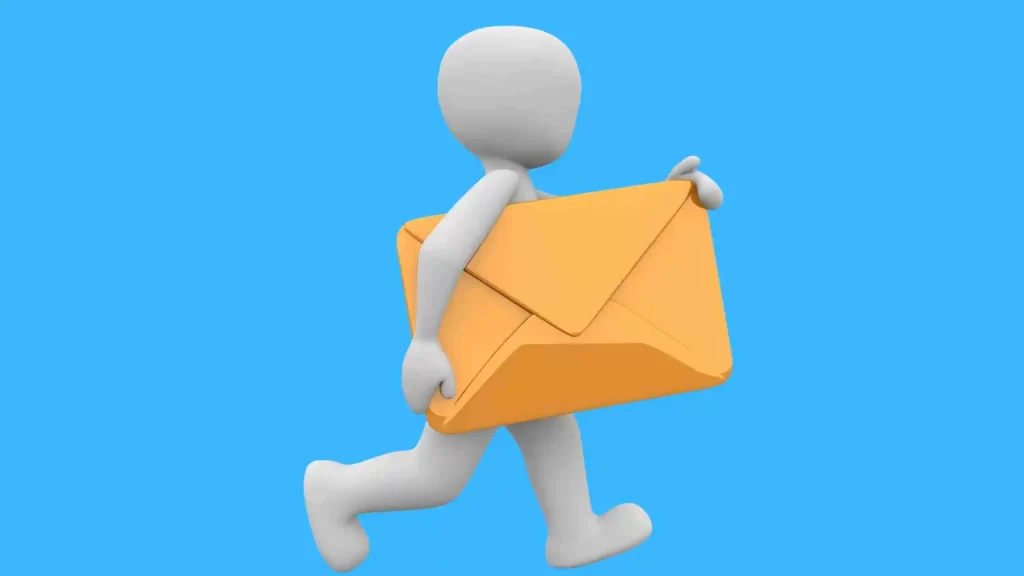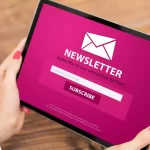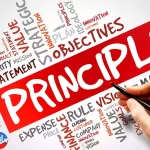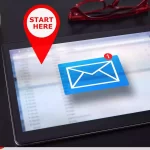Sometimes businesses ask me how to get started with email marketing and how to send the first email to their contact database.
They are sometimes actually afraid of not making a mistake. And so they wait and postpone.
It is a pity. They are unnecessarily preparing for new clients and increased orders.
Fundamentals of Digital Marketing and Sales
Customer. He purchased a product from you a few weeks, months, or years ago. And that was the end of it.
Maybe he even came back and placed another order. But probably not. Rather, he made another purchase from a rival. Why? Because your rival emailed him before you did.
They provided him with facts that attracted him. They assisted him. They recalled when he was running out of supplies and began thinking about the next one.
This does not simply apply to customers. But also with prospective consumers. People who are only staring at you from afar and thinking about purchasing something.
Suppose you want people to turn to you and become consumers. If you want your clients to return back and not purchase similar things from a rival, you need to connect with them.
By communication, don’t think of daily bombardment with wonderful excellent discounts. Rather, strive to create a long-term connection with the consumer. Only then will he return.
When you have ten consumers, it’s simple to wager on them or call them. You talk, you have feedback, and the consumer is happy that someone is interested in his opinion difficulties.
However, personal attention may not be particularly successful if there are already more clients. This is where email marketing comes into play.
Email still pays off
I’ll let a friend of mine do the talking, who initiated a project on Startbode.com for a new paper model of the state castle.
“And so I decided to attempt to sell this approach to individuals as a project on “Startbode.com,” something I had never done before…
However, it was evident to me that no one would be searching for it there, that I had to get somehow others to notice it.
Of course! Clipped! If I go out to our complete DB of contacts, there is quite a probability that fewer than 300 models might be sold there throughout the 30 days of the campaign. Well, if not, nothing occurs, so we don’t release the model…
So I produced a project on Startbode. At Startbode, our initiative was launched last Monday (October 29) at roughly 10:30 am. Well, at around 10:50, after I confirmed everything was in order, I sent the prepared message to the 1,116 contacts from our DB for whom it was relevant. And the result…? See for yourself…
- Opens: 699 (63%)
- Clicks: 372 (34%)
- Conversions: 53%
- Unsubscribes: 8 persons
I believe that’s not a terrible outcome at all for an email offer these days, particularly the first one I’ve ever been in this format did…
We are obtaining 50% of the desired amount: in around 7 hours!
Obtaining 100% of the goal amount: in roughly 22 hours!!
After a week: approx. 180% of the goal amount obtained!
So how do you get started with email marketing?
Have you accumulated a handful (dozens, hundreds) of contacts, and what next?
What to send as the first message to people who have not gotten any newsletters from you?
How to send the first email appropriately so that it grabs attention?
Prepare the (re)activation email.
What is a (re)activation email?
Reactivation denotes restoration or reactivation.
This implies that you reach out to all your prospects and clients with whom you have not been in touch for a while with a reactivation email.
You will continue communicating.
Logically, it’s not simply people you haven’t sent any emails to yet.
You may also send some type of reactivation email to folks from your database who haven’t viewed your emails for a long time.
This helps you “clean” your database of contacts who are no longer interested in what you do. You have ceased amusing them, or you have simply solved your issue, moved on, and no longer require any more information from you. They simply didn’t log out for some reason.
Thanks to the reactivation email, you identify those who are no longer interested from those who just stopped reading.
But they carry you in their minds and maybe even follow what’s going on with you. You may discard the former with a clean conscience. The latter will at least jolt you up from slumber.
In this article, we will concentrate mainly on the activation aspect. You haven’t sent any emails yet, but you’re ready to start regular email marketing, and you’re about to send your first gulp.
Tips on how to create a first email and what not to forget in it.
Here are seven recommendations on how to compose such a first email and what not to forget in it.
1. Don’t overcomplicate things
Choose a mailing provider like Mailchimp to send your first email. Sending manually from Gmail or Outlook would probably not be the right thing to do, and furthermore, you don’t have any statistics.
Most mailing providers offer templates available for you to utilize. Don’t worry too much. Please select one of them and realize that sometimes little is more. It is largely about content.
There are people who spend hours finding out how to adjust the ideal template. They relocate the bullet here and there, and in the final, they transmit one message in x months. Don’t be like them.
Ideally, send a basic text email. Alternatively, put your logo and your own picture of yourself, your team, and your facilities. The receiver will then associate with and remember you better.
The initial email should be the doorway to continued conversation.
You will develop the right template later when you start sending emails frequently. When you know, it’s worth it.
2. Catchy topic
The first thing a recipient will see in their email inbox is the topic of the email.
And in it, you need to offer him a cause to open the email at all. After all, he didn’t simply receive an email from you that day. And what’s more, he doesn’t even have to remember who you are and that he ever purchased stuff from you.
Therefore, the title must be clear and short; immediately after reading, it must be evident what will follow in the email itself. For example:
- I’m back, and I want to assist you
- A new blog about xxx is here
- I created a new online health consulting
Just remember that guideline #1 also applies to the topic – don’t make it unnecessarily difficult.
3. mention the most important thing
The email content itself contains three parts:
1) Remind yourself.
2) Justify why you are writing.
3) Give a modest taste.
Reminder
The receiver may or may not remember you. It is advisable to suppose that he has forgotten about your world’s very finest and most distinctive shop.
So introduce yourself at the beginning of the email. Tell him how you obtained his contact.
My name is Charles J. Willis, and I offer natural cosmetics for males. You have bought one of my items from me in the past. And that is the reason why I am writing to you today.
If you have numerous sources of contacts (e.g., business cards, forms, requests, orders, etc.), it is good to create an additional reminder for each of them. In a smart mailing system like Mailchimp, it’s a matter of 2 minutes. (Learn why Mailchimp is the best)
Justify
The receiver will remember, but instantly you have to address the question: Why the heck is he writing to me right now?
Newly on my website, you can discover a blog where I routinely address the impact of salt on men’s skin. That is why I decided to compile a newsletter in which I would routinely answer the most common queries of my clients. In addition, I will notify you about the news I have prepared.
It’s wonderful to have a purpose of connecting with something particular that you’re planning. That’s vital. You’re simply making things up. It doesn’t have to be done yet.
You don’t have to wait till your new pages are ready to write about them. You don’t need to write the first ten posts to display your “completed” blog. Create expectations.
In many people’s view, when it’s done, it’s old.
Tasting
In order not to be left with empty words, feel free to provide a very modest taste of what you are cooking.
In the first posts on our new site, I will address how to get rid of aftershave. Many people have questioned me about this issue in the past and I have to say that I have been seeking for a long time to discover anything that works almost like a miraculous salve. And you undoubtedly have one in your kitchen at home.
The tasting may take various shapes. We know discounts and presents at ordinary shops, but you don’t have to stop there. On the contrary, draw your finest cards and pass them over to the observer for a minute.
For email content, remember that you are not composing a styling exercise. You don’t have to tell everything about yourself and what you are prepared for. Save it for later. It better be short, to begin with.
In the first message, figuratively wave and say:
Hello, I’m here again, we’ve been in contact in the past, and now I want to update you on what I’m up to, and it’s going to be wonderful.
Nothing more, nothing less. There will be time for the others in future communications.
4. Don’t overlook the call to action
The receiver already knows who you are and why you are writing to them.
What should he do now? Should he answer? Does he have to click on something? Check out the Facebook.
If you don’t make it apparent to him, he won’t know. Most likely, he will read the email and … nothing.
So include a call to action at the conclusion of your email. For example:
- Click to go to my blog
- Respond to this email and let me know what issue interests you the most
- I was hoping you could reply to this email and describe what interests you about my goods
- Please take a look at our Facebook for now. We placed photographs from the preparation there
5. Sign yourself
The receiver of the email is a human. You, as the sender, are also human. Why hide behind a company?
With a personal brand, it’s apparent there. You are acting under your own name.
Sign an email from a bigger corporation or e-shop in the same manner. A genderless “Team XYZ” signature will do nothing to aid you with credibility, marketing, or sales.
What if the receiver wishes to react to you… What will he write? Dear team? Probably not.
It is personal, and the receiver likes that. He might contact you in a reply or later in any conversation with the firm, knowing that you provided him with this information and he wants to react to it.
In later emails, you may add his observation, experience, or tale which would be plausible.
6. Write like a person
This applies not just to the initial email but also to all future ones.
Even if you’re selling nuclear submarines, your email doesn’t have to appear like an authoritative view. Let alone if you’re selling something less difficult.
In May, I attended a presentation by the “boring” engineering business Schunk, which offers clamping technology.
That presentation was the finest of the 6 I witnessed that day only because the professor intended it that way.
There’s a certain beauty in coming off as natural and unconcerned.
Imagine a circumstance when you are chatting to a consumer in person. Or by phone. What style do you speak?
This is precisely what is excellent to pass to the text. That’s YOU. And the consumer buys goods and services from YOU, not from the firm XYZ.
Therefore, write simply and do not use technical terminology unless essential. If they cannot be avoided, explain them.
You are sending the initial email. Therefore be as precise as possible so that the individual wants to read your subsequent emails. And it kept him coming back to you for additional purchases.
7. Check everything thoroughly
Do you recall the first rule? I mentioned that it is preferable not to complicate things needlessly and to take the simplest approach. That doesn’t imply you somehow pay it off, and fast press send.
Feel free to prepare things rapidly and perform a thorough inspection at the end.
- I picked the proper recipient
- I have everything in the content
- I have no spelling mistakes
- Links work
Especially with the initial emails, confirm that the receiver understands what you said.
Has your email been read by a coworker or a friend? Don’t tell him what you wanted to convey in the email. Let him read the text and then ask him about it. Do people assume you write the way you talk? Does he know what to do?
With practice coming, you will grow better with each email you compose. So you don’t have to deal with this for all emails.
We do this for the first and some extremely crucial emails. It’s a little of additional time, but it’s worth it.
So, now all you have to do is click “Send.” And there you have it.
And you are at the beginning again…
Once you send your first email, it doesn’t imply you’re going to put your feet up. For a time, maybe sure, you would follow the numbers, but then you need to deliver what you promised.
The next newsletter will go out in a week, 14 days, or a month, but you may start embroidering on it now.
Expect that it will take extra time to produce your reports initially. Once you start going, you’ll be able to manage it more quickly.
The preparation also involves assessment. You may find out what figures to concentrate on and how to assess them.
Thanks to your own figures, you will find out which issue attracts your customers more and which less, how they reply to emails, and whether you send them on Monday morning or Wednesday night. And a lot of other vital stuff.
All information will assist you while producing more newsletters. You will steadily develop and be rewarded with delighted receivers and additional orders.





